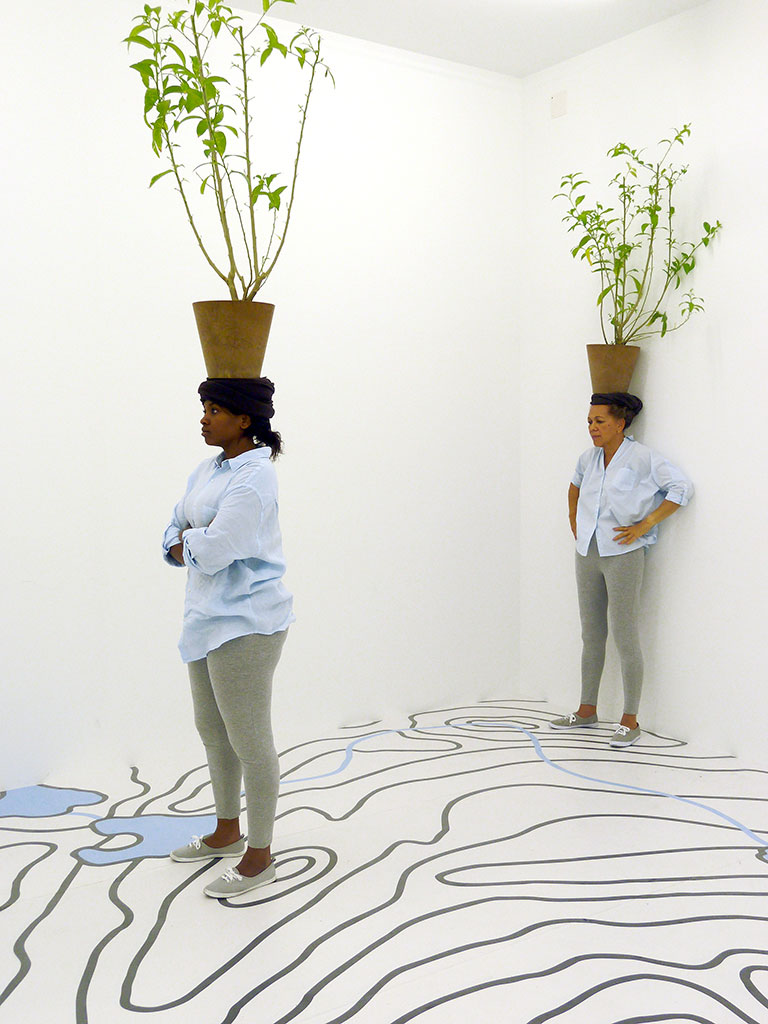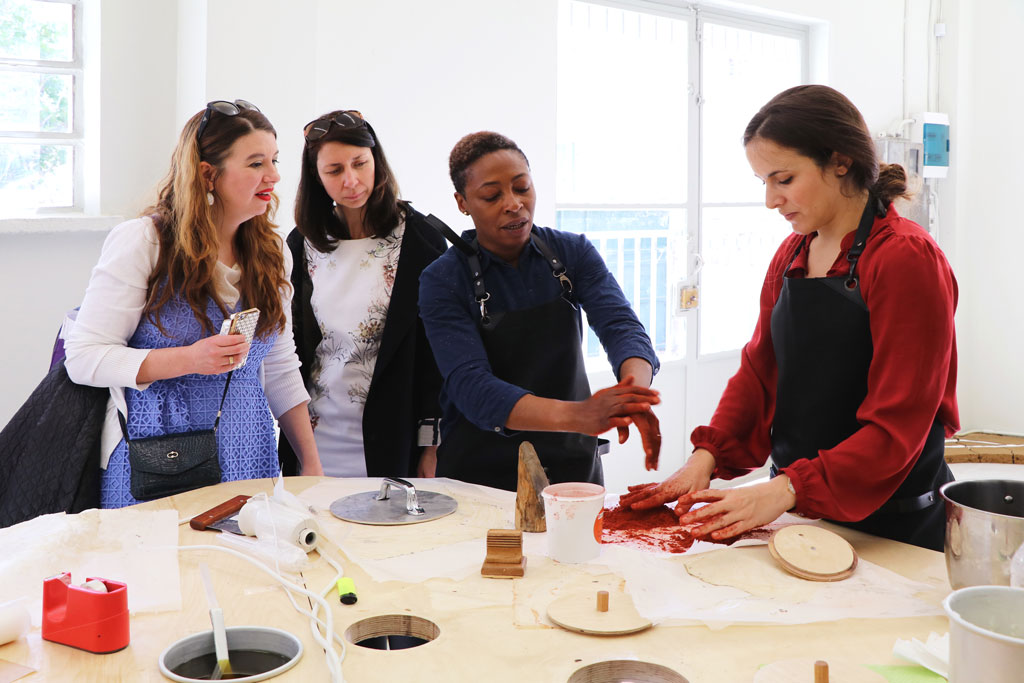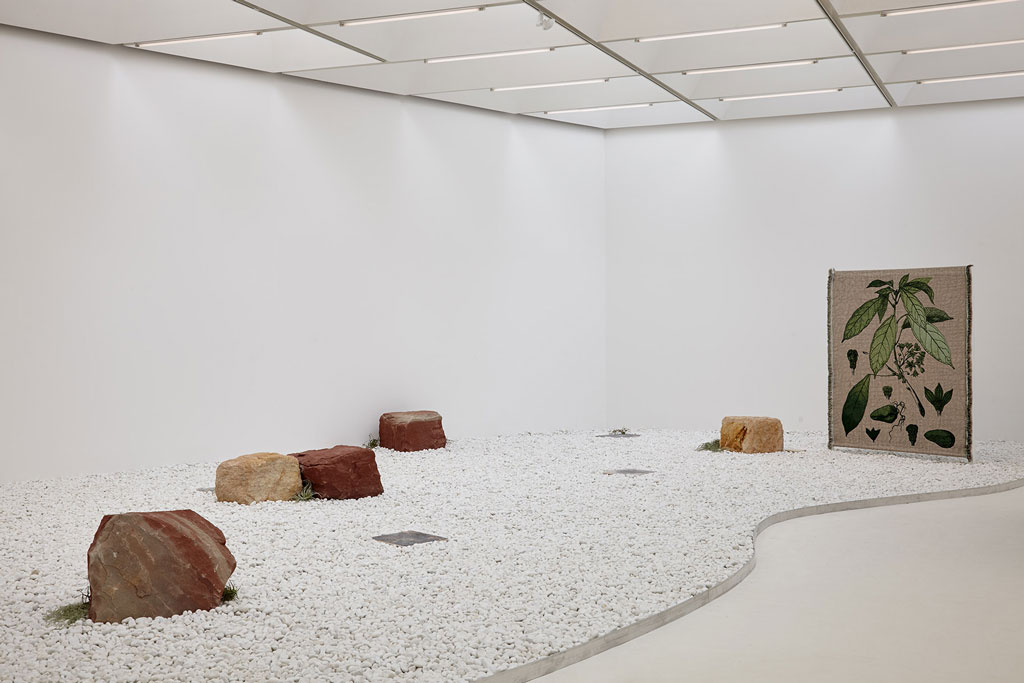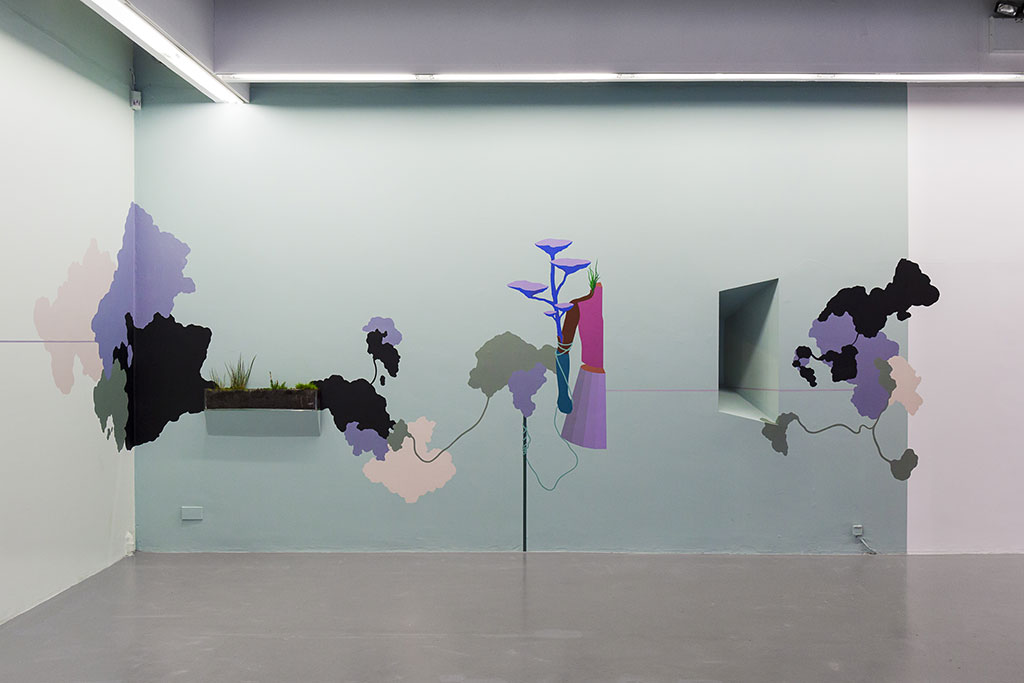ART-PRESENTATION: Otobong Nkanga-There’s No Such Thing as Solid Ground
 Otobong Nkanga’s drawings, installations, photographs, sculptures and performances examine the social and topographical relationship to our everyday environment. By exploring the notion of land as a place of non-belonging, Nkanga provides an alternative meaning to the social ideas of identity. Paradoxically, she brings to light the memories and historical impacts provoked by humans and nature. She lays out the inherent complexities of resources like soil and earth and their potential values in order to provoke narratives and stories connected to land.
Otobong Nkanga’s drawings, installations, photographs, sculptures and performances examine the social and topographical relationship to our everyday environment. By exploring the notion of land as a place of non-belonging, Nkanga provides an alternative meaning to the social ideas of identity. Paradoxically, she brings to light the memories and historical impacts provoked by humans and nature. She lays out the inherent complexities of resources like soil and earth and their potential values in order to provoke narratives and stories connected to land.
By Efi Michalarou
Photo: Gropius Bau Archive

The complex and shifting relationship between humans, land, and corresponding structures of repair is a central premise of Otobong Nkanga’s exhibition titled “There’s No Such Thing as Solid Ground”. Addressing global systems of exploitation and extraction, her work turns a poetic and critical eye toward the circulation of people, flora and fauna as well as natural resources, especially minerals. Nkanga understands the notion of ‘land’ as a geological and discursive formation that extends beyond soil, mapped territories and earth. It is a terrain on which ecological, economic, political and social forces are caught up in rhythms of conflict and negotiation. A place, where we as humans struggle to find solutions through gestures of innovation, redistribution and cohabitation. Based on intensive research and the weaving together of mediums, including installation, performance, drawing, poetry and storytelling, Nkanga’s work spans the temporality of colonial regimes and the global networks operative ‘beneath the surface’ and acting on living bodies. There’s No Such Thing as Solid Ground presents a series of durational installations and performance works, alongside a new wall drawing and multi-channel sound piece. The exhibition’s first room houses the continuously evolving installation “Taste of a Stone” (2010-20), an indoor garden staged specifically for this historical gallery. The landscape of gravel and boulders appears serene yet also correlates stones and bones with legacies of forced labour, geological finds and pulverised earthly matter. It will also serve as the gathering place for a series of lectures, workshops and social encounters.
Activated daily throughout the show “Diaspore” (2014/2020) is a performance-installation led by women of African heritage carrying potted Cestrum nocturnum (night blooming jasmine) traversing lines of ancestry, oral memory, indexing rootedness and abandonment, while tuning into the powerful self avowal of black being everywhere. For this exhibition Nkanga recomposes the multi-channel sound work “Wetin You Go Do? Oya Na” (2020) as a site responsive installation arranging the sculpted forms as counterweights addressing power structures and fragile balance during times of dispossession and anxiety. Through polyphonic tones, echoes, chants, and utterances in English and Nigerian pidgin by the artist herself, this installation acts as an acoustic chamber emphasising notations of submission, rebellion and resilience. Nkanga’s projects cut through the smokescreen of discourse and ideology in considering how to manifest restorative care and accountability that goes ‘beyond human’ registers – attending to rapid exhaustion of the planet as the rising cost of algorithmic capitalism. “Manifest of Strains” (2018) charts the metabolism of environmental justice, collective rage and technological desire through an installation that harvests the elements: fire, water and air. Through an exchange of energies this mechanistic system denotes periods of latency, corrosion and eruption. Moreover, it visualizes structural oppression and the collective psyche when various parts of society arrive to a boiling point during riots, occupation and revolution. During Otobong Nkanga’s residency, at the Gropius Bau in 2019, she engaged with visitors as part of her multi-site project “Carved to Flow”, that was initiated as part of documenta 14 (2017). The transmission of knowledge through conversation, horizontal learning, poesis and bodies in flow are key aspects of this platform for research, communal production and connection. Throughout the exhibition, a workshop on the ground floor will house this ongoing project. Carved to Flow is designed as a support structure inspired from African architecture. It involves the circulation of materials and, by extension, bodies, as part of a process that revolves around the making and distribution of O8 Black Stone soap. The soap blends nourishing oils and butters from Africa, the Middle East and the Mediterranean basin – sites of waterborne migration routes – fused with charcoal, the remnant of organic matter that is carbonised in the absence of oxygen. It contrasts the regions’ fecundity with the charred aftermath of crisis, destruction, extraction or mismanagement: states that leave peoples and environments physically gasping for air.
Info: Curators: Stephanie Rosenthal with Clara Meister, Gropius Bau, Niederkirchnerstraße 7, Berlin, Duration: 10/7-13/12/20, Days & Hours: Mon, Wed Sat-sun 1-:00-19:00, Thu-Fri 10:00-21:00, www.berlinerfestspiele.de



